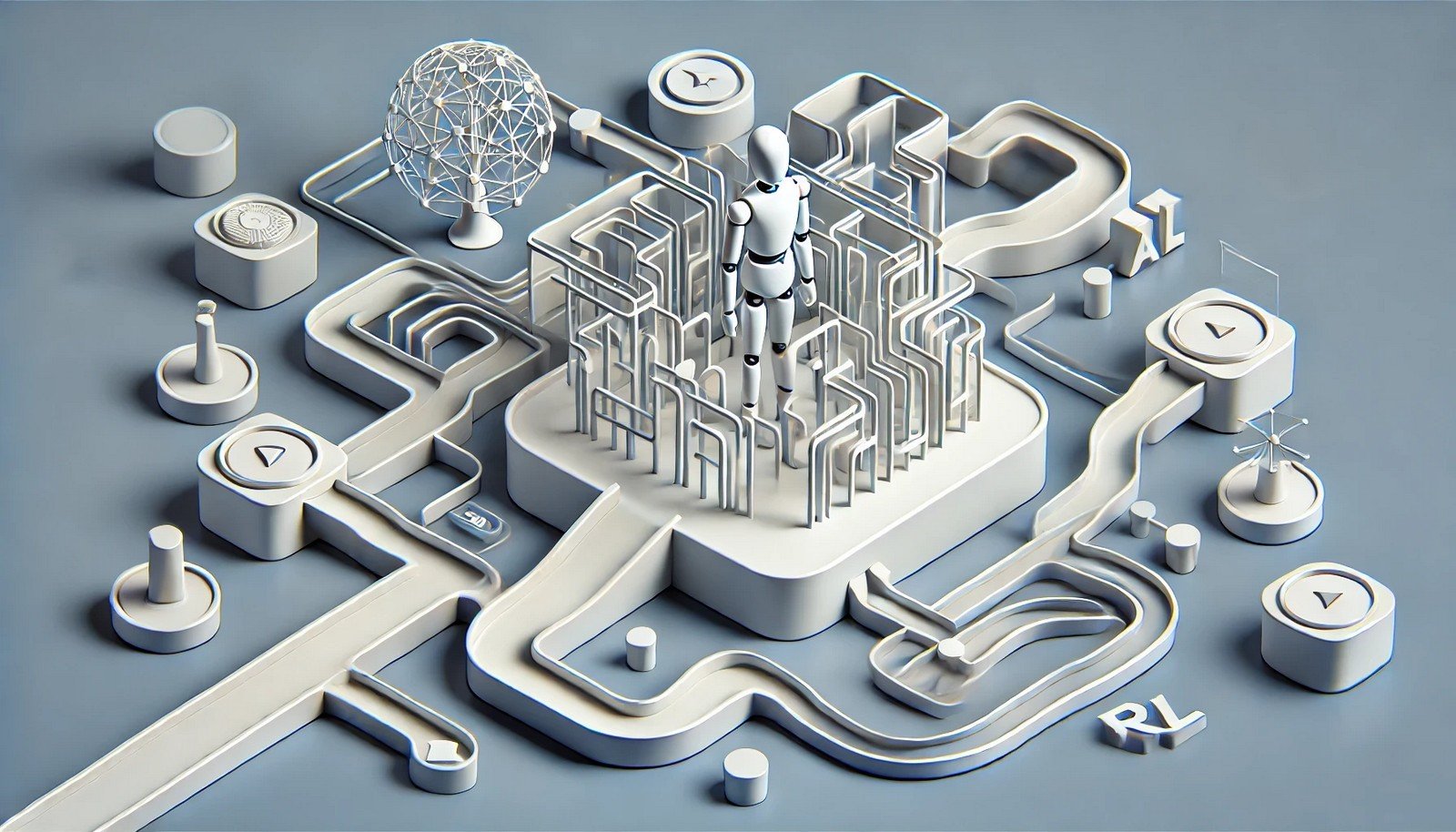Model-Based RL

Quick Navigation:
- Model-Based RL Definition
- Model-Based RL Explained Easy
- Model-Based RL Origin
- Model-Based RL Etymology
- Model-Based RL Usage Trends
- Model-Based RL Usage
- Model-Based RL Examples in Context
- Model-Based RL FAQ
- Model-Based RL Related Words
Model-Based RL Definition
Model-Based RL, or Model-Based Reinforcement Learning, is an approach within reinforcement learning where an agent builds and uses a model of the environment to inform decision-making. This model predicts the potential outcomes of actions, allowing the agent to simulate various scenarios before interacting with the real environment. Model-Based RL differs from Model-Free RL by emphasizing learning a structured understanding of the environment, thus enhancing efficiency in planning and reducing trial-and-error learning. Model-Based RL is particularly useful in situations where exploring every possibility in the real environment is costly or dangerous.
Model-Based RL Explained Easy
Imagine you’re learning a new game. Instead of trying every move to see what happens, you create a mental model of how the game works based on the rules. Now, you can “imagine” what might happen if you make certain moves before actually playing them. This is like Model-Based RL, where the AI uses a model to “think ahead,” making it smarter and faster at finding good strategies without taking unnecessary risks.
Model-Based RL Origin
The origins of Model-Based RL are tied to developments in artificial intelligence and control theory, particularly in the mid-20th century. The approach gained traction with advancements in computational power and algorithms, which allowed for more complex modeling and simulation of environments. Early work in Model-Based RL was inspired by the need to create agents that could make informed decisions without extensive trial and error, especially in controlled or costly environments.
Model-Based RL Etymology
The term "Model-Based" signifies reliance on constructing an internal "model" of the environment to base learning on predicted outcomes rather than solely on direct experience.
Model-Based RL Usage Trends
With the rise of robotics, autonomous vehicles, and virtual assistants, Model-Based RL is gaining momentum due to its efficiency in learning tasks that require foresight and planning. Companies use it in sectors like healthcare, finance, and robotics, where accurate prediction and efficient decision-making are critical. Although challenging to implement due to computational demands, its ability to perform high-quality simulations makes it increasingly popular.
Model-Based RL Usage
- Formal/Technical Tagging:
- Reinforcement Learning
- Model-Based Methods
- Predictive Modeling - Typical Collocations:
- "Model-Based RL algorithm"
- "environmental model in RL"
- "planning in Model-Based RL"
- "policy optimization in Model-Based RL"
Model-Based RL Examples in Context
- Model-Based RL is used in self-driving cars, where the vehicle can simulate various maneuvers and predict their outcomes before making real decisions on the road.
- In robotic surgery, Model-Based RL allows robots to create simulations of surgical tasks, reducing risks by learning within a model.
- Model-Based RL in finance helps algorithms simulate market trends, improving decision-making in trading and investment strategies.
Model-Based RL FAQ
- What is Model-Based RL?
Model-Based RL is an approach in reinforcement learning where the agent uses an internal model to predict and simulate the effects of actions. - How is Model-Based RL different from Model-Free RL?
Model-Based RL builds a predictive model of the environment, while Model-Free RL relies on direct experience with trial and error. - What applications use Model-Based RL?
It’s used in robotics, autonomous driving, healthcare, and finance, where efficient and safe decision-making is essential. - What are the benefits of Model-Based RL?
It allows for more efficient learning, reduced trial and error, and better planning by predicting outcomes. - What are the challenges of implementing Model-Based RL?
It requires high computational power and accurate modeling, which can be complex and resource-intensive. - Can Model-Based RL improve safety in AI?
Yes, it’s particularly helpful in safety-critical areas like autonomous driving, where predicting outcomes reduces risk. - Is Model-Based RL suitable for all environments?
Not always; it’s more suitable for environments where a reliable model can be created and maintained. - What algorithms are common in Model-Based RL?
Algorithms include Dyna-Q, Monte Carlo Tree Search, and Planning-based approaches. - How does Model-Based RL handle uncertainty?
Many approaches incorporate probabilistic models to account for uncertainty and variability in the environment. - What industries benefit most from Model-Based RL?
Industries like robotics, finance, healthcare, and autonomous systems are the primary beneficiaries.
Model-Based RL Related Words
- Categories/Topics:
- Reinforcement Learning
- Predictive Modeling
- Autonomous Systems
Did you know?
Model-Based RL has significantly impacted video game AI, where developers use it to create more intelligent, adaptive characters. These AI characters use Model-Based RL to predict player actions and respond in dynamic ways, enhancing the gaming experience.
PicDictionary.com is an online dictionary in pictures. If you have questions or suggestions, please reach out to us on WhatsApp or Twitter.Authors | Arjun Vishnu | @ArjunAndVishnu

I am Vishnu. I like AI, Linux, Single Board Computers, and Cloud Computing. I create the web & video content, and I also write for popular websites.
My younger brother, Arjun handles image & video editing. Together, we run a YouTube Channel that's focused on reviewing gadgets and explaining technology.



Comments powered by CComment